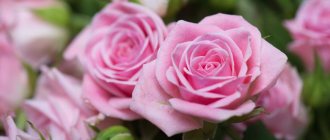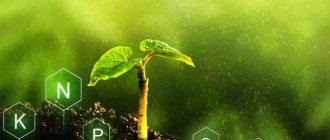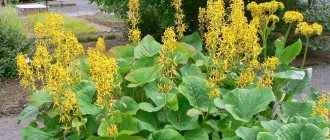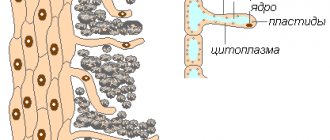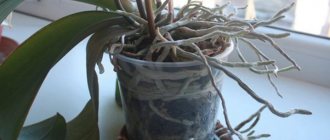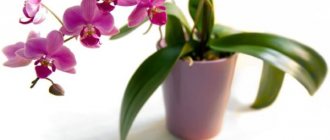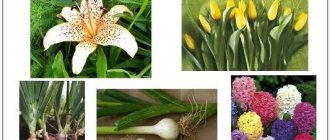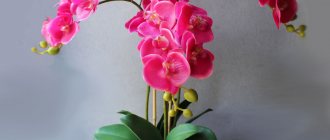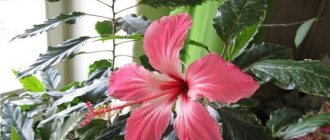The stem is the main structural axis of a vascular plant. As a rule, the stem is located above the ground, but underground modifications of the stem are also found.
The main functions of the stem are to support leaves, flowers and fruits. The stem organizes the leaves so that they receive direct sunlight for the process of photosynthesis. Conductive plant tissues such as xylem and phloem transport water and other substances through the plant body. Stems store food, water and nutrients. Stem cells, meristems, produce new living tissues. Depending on their location relative to the soil, three types of stems are distinguished: 1) underground, 2) aboveground and 3) subaerial.
Variety of stems
The stem is the axial part of the plant’s shoot; it conducts nutrients and carries the leaves to the light.
Spare nutrients may be deposited in the stem. Leaves, flowers, fruits with seeds develop on it. The stem has nodes and internodes. A node is a section of the stem that contains a leaf(s) and a bud(s). The area of the stem between adjacent nodes is an internode. The angle formed by the leaf and stem above the node is called the leaf axil. Buds occupying a lateral position on a node, in the leaf axil, are called lateral or axillary. At the top of the stem there is an apical bud.
The stems of woody and herbaceous plants differ in life expectancy. Aboveground shoots of temperate climate grasses live, as a rule, for one year (the lifespan of the shoots is determined by the lifespan of the stem; the leaves can be replaced). In woody plants, the stem exists for many years. The main stem of a tree is called a trunk; in shrubs, individual large stems are called stems.
There are several types of stems.
Many woody and herbaceous plants have erect stems (their shoot growth is usually directed upward, towards the sun). They have a well-developed mechanical tissue; they can be woody (birch, apple tree) or herbaceous (sunflower, corn).
Creeping stems spread along the ground and can take root at nodes (creeping stems, strawberries).
Climbing and climbing stems, combined into a group of vines, are widespread. Among the vines there are woody and herbaceous ones. Due to the insufficient development of reinforcing elements due to the rapid growth, they need supports. Climbing shoots spirally wrap their stems around the support, and in some plants the spiral turns are directed clockwise, while in others they are counterclockwise. There are also neutral plants, the stems of which curl both to the right and to the left.
Climbing stems, rising upward, wrap around the support (field bindweed, hops).
The clinging stems rise upward, clinging to the support with tendrils (mouse peas, grapes).
Arrangement of leaves on the stem
The areas of the stem where leaves develop are called nodes. Several leaves can grow from one node, this determines their location.
The next thing is that one leaf sprouts from one node; they are placed spirally on the stem and do not interfere with the flow of sunlight to the underlying leaves (birch).
Opposite - two leaves are in the same node, opposite each other (mint).
Whorled - one node has three or more leaves, this arrangement is quite rare (crow's eye).
Arrangement of leaves on the stem
Types of bud arrangement on the stem
Apical - the bud is located at the top of the shoot.
The lateral location is divided into axillary and accessory.
Axillary buds are formed in the axils of the leaves, their number corresponds to the number of leaves on the stem, and adventitious buds are located in the internodal areas, roots, and leaves. With their help, vegetative propagation of plants is carried out.
Shapes of stems
If we cut the stem crosswise, we will see that in the cross section the stem is most often round in outline, with a smooth or ribbed edge.
But it can also be different: triangular (in sedge), tetrahedral (in nettle), multifaceted (in many cacti), flattened or flat (in prickly pear), winged (in sweet pea). Wide, flat, heavily furrowed stems often represent abnormal tissue proliferation. In cereals, the stem (aerial part) is called a culm. It is usually hollow in the middle (except for the nodes). Hollow stems are common in the families Apiaceae, Cucurbitaceae, and others.
What is a stem
A stem is an elongated rod axis that connects the constituent parts of a plant.
In this work we will look at what types of stems there are, their structure, features, and functions of the main elements. All this is studied in biology lessons and used in tests and examinations.
Internal structure of the stem
Young (annual) stems are covered on the outside with a skin, which is then replaced by a plug consisting of dead cells filled with air. The skin and cork are integumentary tissues.
Cork is a multilayer covering fabric. It appears already in the first year of life of the shoot. With age, the thickness of the cork layer increases. The cork cells are dead, filled with air, tightly adjacent to each other. Reliably protects the internal tissues of the stem from unfavorable conditions.
The skin and cork protect the deeper cells of the stem from excessive evaporation, various damage, and from the penetration of atmospheric dust with microorganisms that cause plant diseases.
The skin of the stem contains stomata through which gas exchange occurs. Lentils develop in the cork - small tubercles with holes. Lentils are formed by large cells of the main tissue with large intercellular spaces.
Bark - under the integumentary tissue there is bark, the inner part of which is represented by phloem. The bast composition, in addition to sieve tubes and companion cells, includes cells in which reserve substances are deposited.
Bast fibers, elongated cells with destroyed contents and lignified walls, represent the mechanical tissue of the stem. They give the stem strength and increase resistance to fracture.
Sieve tubes are a vertical row of elongated living cells, the transverse walls of which are pierced with holes, the nuclei in these cells have collapsed, and the cytoplasm is adjacent to the membrane. This is a conductive bast tissue through which solutions of organic substances move.
Cambium is a long narrow cell of educational tissue with thin membranes. In spring and summer, cambium cells actively divide and the stem grows in thickness.
The dense, widest layer - wood - is the main part of the stem. Like bast, it consists of different cells of different shapes and sizes: vessels of conductive tissue, wood fibers of mechanical tissue and cells of the main tissue.
All layers of wood cells formed in spring, summer and autumn make up the annual growth ring.
The core - the cells are large, thin-walled, loosely adjacent to each other and perform a storage function.
Core rays pass from the core in a radial direction through the wood and bast. They consist of cells of the main tissue and perform storage and conducting functions.
| Skin | Young (annual) stems are covered on the outside with a skin, which is then replaced by a plug consisting of dead cells filled with air. The skin and cork are integumentary tissues. |
| Stoma | The skin of the stem contains stomata through which gas exchange occurs. Lentils develop in the cork - small tubercles with holes. Lentils are formed by large cells of the main tissue with large intercellular spaces. |
| Cork | Multilayer cover fabric. It appears already in the first year of life of the shoot. With age, the thickness of the cork layer increases. The cork cells are dead, filled with air, tightly adjacent to each other. Reliably protects the internal tissues of the stem from unfavorable conditions. |
| Bark | Under the covering tissue there is a bark, the inner part of which is represented by phloem. The bast composition, in addition to sieve tubes and companion cells, includes cells in which reserve substances are deposited. |
| Cambium | Narrow long cells of educational tissue with thin membranes. In spring and summer, cambium cells actively divide - the stem grows in thickness. |
| Core | Central part of the stem. The cells are large, thin-walled, loosely adjacent to each other and perform a storage function. |
| Core rays | Core rays pass from the core in a radial direction through the wood and bast. They consist of cells of the main tissue and perform storage and conducting functions. |
Types of stems
Based on their structure, stems are divided into two types:
- woody,
- herbaceous.
According to the cross-sectional shape, there are the following types:
- round,
- cylindrical,
- three- and tetrahedral shape,
- flat,
- winged,
- ribbed.
Types of position:
- above the earthen layer,
- underground.
According to the type and method of growth, they are divided into types:
- creeping type, creeping along the soil and taking root by adventitious roots,
- the ascending lower segment of the stem is adjacent to the ground, and the upper part rises vertically from the soil surface,
- erect,
- the creeping lower part, without taking root, lies on the surface of the earth,
- curly,
- clinging.
General features of the anatomical structure of the stem
The anatomical structure of the stem corresponds to its main functions: conductive - the stem has a well-developed system of conductive tissues that connects all the organs of the plant;
supporting - with the help of mechanical tissues, the stem supports all above-ground organs and brings the leaf to favorable lighting conditions; growth - in the stem there is a system of meristems that support the growth of tissues in length and thickness (apical, lateral, intercalary). The apical meristem gives rise to the primary lateral meristem - the procambium - and intercalary meristems. As a result of the activity of primary meristems, the primary structure of the stem is formed. It can persist in some plants for a long time. The secondary meristem - the cambium - forms the secondary state of the stem structure.
Primary structure. In the stem there is a central cylinder (stele) and a primary cortex.
The primary cortex is covered on the outside with epidermis (integumentary tissue), under which there is chlorenchyma (assimilation tissue). It can form alternating stripes stretching along the stem with mechanical tissues (collenchyma and sclerenchyma).
The central cylinder is surrounded by a layer of endoderm. The main part of the central cylinder is occupied by conducting tissues (phloem and xylem), which together with mechanical tissue (sclerenchyma) form vascular-fibrous bundles. Inside the conducting tissues there is a core consisting of unspecialized parenchyma. Often an air cavity forms in the core.
Secondary structure - the cambium forms secondary xylem inward, and secondary phloem outward. The primary bark dies off and is replaced by a secondary bark - this is the collection of all the secondary tissues located outside the cambium.
The structure of the stem depends on living conditions and reflects the structural features of a particular systematic group of plants.
Stem
The stem is the frame, the central support of the plant, connecting its underground and above-ground parts. Main functions of the stem:
1) supporting - supports leaves, flowers, fruits, buds and side shoots developing from them; 2) conductive - transports substances between the leaf and the root;
At the very top of the stem there is a growth point, which is represented by educational tissue. The stem and each of its side shoots have growth cones. At the growth point, cells continually divide to form new ones. Thanks to the apical bud, the plant grows upward, and the lateral buds form the crown.
According to the direction of growth, the stems are erect (poplar, pine, birch, wheat, etc.), creeping (loosestrife), climbing (lianas), creeping (creeping tenacious, strawberry), climbing (bindweed, hops) (Fig. 1).
Fig.1 Types of stems
Internal structure of the stem (part of a cross section of the stem of a three-year-old linden shoot)
Periderm. The primary integumentary tissue (epidermis) does not function for long. Instead, a secondary integumentary tissue is formed - periderm, which consists of three layers of cells - cork (outer layer), cork cambium (middle layer) and phelloderm (inner layer). To carry out exchange with the environment, there are lentils on the periderm.
The primary cortex consists of two layers: collenchyma (the layer under the periderm) - mechanical tissue - and the parenchyma of the primary cortex (can perform a storage function).
Secondary bark (or phloem). Typical structure of bast: sieve tubes, satellite cells, bast parenchyma and bast fibers. The bast fibers form a layer called hard bast; all other elements form a soft bast.
Cambium is an educational tissue. Due to the division and differentiation of its cells, bast cells (secondary bark) are formed on the outside, and wood cells are formed on the inside. As a rule, much more wood cells are formed than bark cells (ratio 4:1). The growth of the stem in thickness occurs due to the activity of cambium cells. The activity of the cambium stops in winter and resumes in spring.
Wood (xylem) is the main part of the stem. It is formed due to the activity of the cambium on its inner side. Consists of vessels (tracheas), tracheids, wood parenchyma, wood fibers (mechanical tissue). One ring of wood is formed per year. The boundary between the annual rings is clearly visible, because spring wood, which was formed after the awakening of cambium activity, consists of large thin-walled cells, while autumn wood consists of smaller, thicker-walled cells. The transition from spring wood to autumn wood is gradual, from autumn to spring wood is always sudden (this is where the boundary between the tree rings is formed). The age of the plant can be determined by the growth rings of the wood. In tropical plants that grow continuously throughout the year, the growth rings are completely invisible.
The pith is the central part of the stem. Its outer layer (perimedullary zone) consists of living parenchyma cells, the central layer - of large cells, often dead. There may be intercellular spaces between the core cells. In the living cells of the core, reserve nutrients are deposited.
The pith ray is a series of parenchyma cells that arise from the pith and extend radially through the wood and phloem in the primary bark. Their function is conductive and storage.
Anatomy of a stem
The main functions of the stem are to conduct water and nutrients. Additional functions may include photosynthesis, which usually occurs in young plant stems, and the deposition of storage nutrients in perennial stems.
The anatomical structure of a plant stem is determined by its main functions.
It is characterized by the development of mechanical and conductive plant tissues. In addition, the stem is characterized by a complex system of meristems - apical, lateral and intercalary, which determine its growth over a long time and the emergence of new organs.
The plant stem arises from the apical meristem, from which three layers of tissues are differentiated: integumentary, conductive, and basal.
First, these tissues are represented by the so-called primary meristem (promeristem), consisting of protoderm, procambium and the main meristem.
Primary conducting tissues develop from the procambium.
The first elements of the phloem differentiate from the outer procambium cells located towards the periphery. Primary phloem is represented by thin-walled, short-lived elongated cells and is called protophloem, and its outer cells can be represented by mechanical fibers.
The primary elements of xylem - tracheids, less often vessels with ringed and spiral thickenings of the walls - arise later from the internal cells of the procambium and are generally defined as protoxylem.
In addition to conducting elements, it contains parenchyma cells.
Later, it differentiates inward from the protophloem, having a more or less typical structure for phloem. Outside the protoxylem, metaxylem is formed, consisting of tracheids or trachea with thicker lignified walls.
Thus, due to the activity of the procambium and the rest of the apical meristem, the primary structure of the plant stem arises.
In monocotyledonous plants, the entire procambium is differentiated into elements of primary conducting tissues.
The stems of monocots, especially herbaceous plants (cereals), have a simpler structure compared to the stems of dicotyledonous plants; they are characterized mainly by a primary structure.
In dicotyledonous plants, in the middle part of the procambial cord, the formation of cambium occurs and the formation of secondary conducting tissues (metaphloem and metaxylem) begins, the volume of which increases due to the division of cambium cells.
Bundles consisting only of primary tissues, as in monocots, are closed; bundles with a cambium, characteristic of dicotyledons, are open.
Herbaceous monocots are characterized by a diffuse distribution of vascular bundles.
The vascular bundles are closed, collateral, less often concentric. Of the mechanical tissues, sclerenchyma is the most developed; collenchyma is found in few plants. There is no secondary thickening in herbaceous monocots.
The primary structure of the stem of monocots can be considered using the example of corn. On the surface, the stem is covered with a single-layer epidermis with a layer of cuticle. Under the epidermis there is a layer of parenchyma in the form of a continuous ring.
The parenchyma cells directly under the epidermis are sclerified, large and thin-walled toward the center. In young stems, chlorophyll-bearing parenchyma is located under the epidermis. With age, the sclerified ring thickens, the cell walls become woody, and a sharp boundary is formed between these cells and the cells of ordinary parenchyma.
Parenchyma cells are large, with thin walls, with intercellular spaces between them. By the end of the growing season, most of the parenchyma cells are filled with air, the core becomes white and soft.
Closed vascular-fibrous bundles of the collateral type are randomly scattered in the parenchymal tissue.
On cross sections of bundles, phloem has the appearance of a mesh; its large cells correspond to the cross section of sieve tubes.
At the nodes of the mesh there are small square or rectangular accompanying cells. In adult stems, only metaphloem functions. The protophloem, which occupies a peripheral position in the bundle, is usually compressed and deformed.
Xylem is represented by 3-5 vessels. Inland of the metaphloem are two very large porous metaxylem vessels connected by mechanical elements. Between the metaxylem vessels there are narrow-lumen protoxylem vessels with ringed and spiral thickenings of the membranes. During the development of the bundle, some elements of the protoxylem are destroyed and in their place an air cavity appears, limited by parenchyma cells.
Conditions affecting tree growth in thickness
By the thickness of the growth rings you can find out in what conditions the tree grew in different years of its life. Narrow growth rings indicate a lack of moisture, shading of the tree and poor nutrition.
The tree ring is the growth of wood per year. In the inner zone of this ring, closer to the core, the vessels are larger and there are more of them. This is early wood. In the outer zone of the ring, closer to the cortex, the cells are smaller and thicker-walled. This is latewood. In winter, cambium cells do not divide; they are in a state of rest. In spring, with the budding of the buds, the activity of the cambium resumes. New wood cells appear and, consequently, a new growth ring is formed. The large-celled wood (early) appears next to the small-celled (late) wood of the previous year. Thanks to this proximity, the border with annual wood growth becomes clearly visible.
Movement of nutrients along the stem
For normal plant life, water and nutrients must be supplied to all organs. One of the most important functions of the stem is transport. It consists in the transfer of solutions from soil nutrition organs - roots and air nutrition organs - leaves to all organs of the plant. This can be easily verified by making longitudinal and transverse sections of the plant stem as shown in the figure.
The entire plant is permeated with conductive tissues. Some conducting tissues carry water with minerals dissolved in it, while others carry a solution of organic substances. Conductive tissues are combined into vascular-fibrous bundles, often surrounded by strong fibers of mechanical tissue.
Vascular-fibrous bundles run along the entire stem, connecting the root system with the leaves. But to be completely convinced of this, it is advisable to perform the following experiment.
Target:
make sure that vascular-fibrous bundles connect the root system to the leaves.
What we do:
Place a sprig of the plant in colored water for a while. In the experiment it will replace minerals. After 2-3 hours, make a transverse and longitudinal incision.
What we see:
changed its color and the wood turned red. The bark and pith remained unpainted.
Result:
solutions of mineral substances, like colored water, rise from the root inside the stem through the vessels of the wood. The vessels pass through the stem, branch into the leaves and branch there. Through these vessels, water with minerals dissolved in it enters the leaves. This is clearly visible in the longitudinal and transverse sections of the stem.
Root pressure and evaporation of water by leaves are of great importance for raising water into the stem. In place of the evaporated water, new water constantly enters the leaves.
What functions does the stem perform?
- Supporting - the stem is the core of the plant, provides its support; place for leaves and flowers to grow;
- conductive - transport of dissolved substances from the root system to leaves and branches, new shoots;
- storage – ensures the constant presence of water and nutrients inside the stem;
- protective – protects against the action of dangerous agents and being eaten by animals (spines and thorns develop);
- vegetative propagation - for individual plants (citrus fruits, pineapple) the only way to produce offspring;
- photosynthesis - the presence of chloroplasts in green cells makes it possible to participate in energy conversion processes;
- assimilation of organic substances , for example cacti, in which the stem takes on the function of leaves;
- axial (mechanical) - brings the plant to the sun (leaves - for photosynthesis, flowers - for pollination).
Movement of organic substances along the stem
Organic substances are deposited in special storage tissues, some of which accumulate these substances inside cells, others - inside cells and in their membranes. Substances that are stored in reserve: sugars, starch, inulin, amino acids, proteins, oils.
Organic substances can accumulate in a dissolved state (in beet roots, onion scales), solid (starch grains, protein - potato tubers, cereal grains, legumes) or semi-liquid state (oil drops in the endosperm of castor beans). Especially a lot of organic matter is deposited in modified underground shoots (rhizomes, tubers, bulbs), as well as in seeds and fruits. In the stem, organic substances can be deposited in the parenchyma cells of the primary cortex, medullary rays, and living medullary cells.
We know that the starch formed in the leaves is then converted into sugar and enters all organs of the plant.
Target:
find out how sugar from the leaves penetrates the stem?
What we do:
Carefully make a circular cut on the stem of a houseplant (dracaena, ficus). Remove the ring of bark from the surface of the stem and expose the wood. We will attach a glass cylinder with water to the stem (see picture).
What we see:
after a few weeks, a thickening appears on the branch, above the ring, in the form of an influx. Adventitious roots begin to develop on it.
Result:
we know that there are sieve tubes in the phloem, and since we cut them by ringing the branch, the organic substances flowing from the leaves reached the ring cutting and accumulated there.
Soon, adventitious roots begin to develop from the influx.
Conclusion:
Thus, experience proves that organic substances move through the phloem.
Stem modification
This means a modified escape. Its role is to accumulate organic substances. Another important role is reproduction.
There are six types of modifications:
- rhizome,
- bulb,
- tuber,
- corm,
- offspring,
- mustache
Organic deposition
Water and mineral salts absorbed by the roots move along the stem to the leaves, flowers and fruits. This is an upward current, it is carried out through wood, the main conducting element of which is vessels (dead empty tubes formed from living parenchyma cells) and tracheids (dead cells that are connected to each other using bordered pores).
Organic substances formed in the leaves flow into all organs of the plant. This is a downward current, it is carried out through the bast, the main conducting element of which is sieve tubes (living cells connected to each other by strainers - thin partitions with holes, they can be in the transverse and longitudinal walls).
In woody plants, the movement of nutrients in the horizontal plane is carried out using heart-shaped rays.
The importance of storage tissue lies not only in the fact that the plant, if necessary, feeds on these organic substances, but also in the fact that the latter are a food product for humans and animals, and can also be used as raw materials.
Functions of the stem
But the stem is not only an organ, which is the axial skeleton of plants and provides an ascending and descending flow of necessary nutrients. For example, in higher spore plants, horsetails, it is chlorophyll-bearing. And in cacti it increases significantly in size, storing water. The process of photosynthesis is also carried out by this organ, since the leaves of this plant have turned into needles in order to lose less moisture.
Each stem contains not only leaves, but also buds. These are future organs that are in their infancy. They are vegetative and generative. The first give rise to the vegetative organs of plants - leaves and shoots. The latter contain the rudiments of a generative organ that ensures sexual reproduction - a flower.
